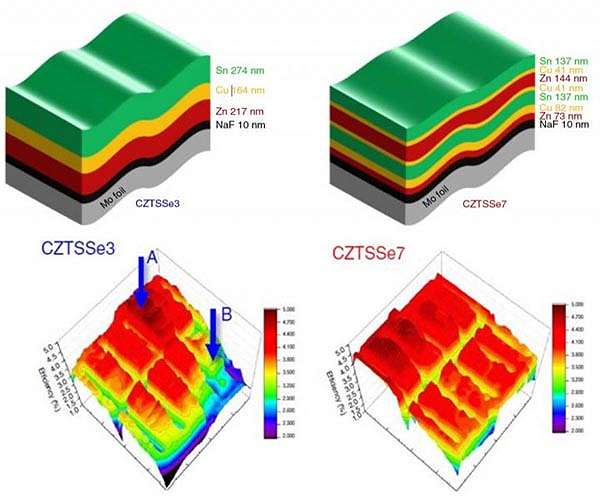The DGIST team sheds light on mechanisms that improve the efficiency of thin-film solar cells
Researchers from the Daegu Gyeongbuk Institute of Science and Technology (DGIST), in collaboration with academics from Ewha Womans University, Incheon National University and MIT, have made significant progress in understanding the separation of electrons and holes in kesterite thin-film solar cells. This discovery is poised to improve the efficiency of solar cells and support the transition to sustainable energy sources.
Solar cells convert sunlight into electricity and are seen as essential for future energy solutions due to their environmental benefits and unlimited resource: the sun. Kesterite thin-film solar cells, composed of copper, zinc and tin, provide a cost-effective solution. However, their efficiency is limited.
The team’s study focused on the mechanisms of electron and hole separation within the light-absorbing layers of these cells. They used scanning probe microscopy to investigate how these separations occur, especially at the interfaces between crystals, which is critical for improving performance.
“The energy level at the crystal interface is higher, which significantly affects how electrons behave in the cell. This insight is crucial for the development of more efficient solar panels,” explains senior researcher Kee-jeong Yang. He pointed out the importance of creating uniform light-absorbing layers and the potential of elemental doping to enhance this process.
The findings also underline the broader applicability of their atomic force microscopy techniques, providing new methods to study carrier behavior not only in solar cells but also in other technologies.
This research is supported by several South Korean government initiatives aimed at promoting carbon-neutral technology and was recently highlighted in the renowned energy magazine Carbon Energy.


